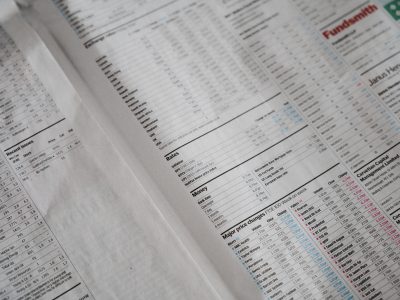The Bullish Pennant pattern is a key technical analysis tool that signals a potential continuation of an existing uptrend. This pattern is often found in strong bull markets where price consolidates briefly before resuming its upward trend.
Recognizing this pattern enables traders to capitalize on further bullish momentum by timing their entries and exits with greater precision. Understanding its significance in predicting trend continuation is crucial for traders looking to enhance their trading strategies.
Defining the Bullish Pennant Pattern: Anatomy and Implications
What Is the Bullish Pennant Pattern?
The Bullish Pennant pattern is characterized by a triangular formation that follows a sharp upward price movement, known as the flagpole. This flagpole represents the initial phase of the pattern, followed by a consolidation phase where the price action narrows and forms a triangle shape with converging trendlines.
The pattern is completed when the price breaks out in the direction of the initial trend, confirming the continuation of the upward movement.
Anatomy and Key Features
Flagpole: The initial sharp upward price movement that sets the pattern’s context.Pennant Formation: A triangular shape formed by converging trendlines, reflecting a narrowing consolidation period.Breakout: The breakout from the triangle that continues in the direction of the original trend, confirming a bullish move.
Implications of the Bullish Pennant Pattern
The Bullish Pennant pattern implies:
Trend Continuation: The pattern usually signifies the continuation of the current uptrend, providing a signal to traders to go long.Bullish Momentum: The breakout from the Pennant suggests strong bullish momentum, indicating that the upward trend is likely to resume with force.
Steps to Identify the Bullish Pennant Pattern
To accurately identify the Bullish Pennant pattern:
Identify the Flagpole: Look for a significant upward price movement that forms the initial flagpole, providing the trend’s context.Spot the Pennant: Find the triangular consolidation phase where the trendlines converge toward a single point.Confirm the Breakout: Wait for the price to break out above the upper trendline with significant volume to confirm the pattern.
Proper identification is crucial for taking advantage of the pattern’s strong bullish implications and aligning your trading strategy accordingly. Look into stock screening tools like TrendSpider if you’re looking to automate technical analysis.
Trading Strategies for the Bullish Pennant Pattern
The Bullish Pennant pattern can provide strong trading signals when used effectively in a strategy. Here’s how to approach trading with this pattern:
Entry Points
Post-Breakout Entry: Enter a long position when the price breaks out above the upper trendline of the Pennant with high volume. This confirms that the price is resuming its uptrend.Retest Entry: In some cases, prices may retest the upper trendline after the breakout. Entering at this point provides a favorable entry with confirmation of the pattern’s validity.
Stop-Loss Settings
Below the Pennant Formation: Place a stop-loss order below the lower trendline of the Pennant. This placement protects against sudden reversals, helping to minimize potential losses.Risk-Based Stops: Alternatively, calculate stop-loss levels based on the maximum risk you’re willing to take, using a fixed percentage below the pennant’s low.
Profit Targets
Flagpole Projection: Measure the height of the flagpole and project that distance upwards from the breakout point to set a reasonable profit target.Fibonacci Extensions: Use Fibonacci extensions to identify potential resistance levels and determine logical exit points for taking profits.
Additional Patterns to Know
In addition to the Pennant pattern traders should also familiarize themselves with these patterns:
Ascending Triangle: A bullish continuation pattern with a flat resistance line and ascending support trendline.Cup and Handle: Indicates bullish continuation after a rounded bottom and a slight pullback resembling a handle.Double Bottom: A reversal pattern indicating a shift from a downtrend to an uptrend after two troughs form at similar levels.Flag Pattern: A continuation pattern similar to the Pennant but with parallel trendlines.
For an exhaustive list of many key chart patterns, check out our guide to master trading chart patterns.
Complementary Technical Indicators
Complement the Bullish Pennant pattern with these technical indicators:
Volume Analysis: Rising volume during the breakout confirms strong participation in the move, validating the pattern.Moving Averages: Moving averages help confirm the trend’s direction and align your strategy accordingly.RSI (Relative Strength Index): An RSI reading above 70 can suggest overbought conditions, supporting the strength of the upward trend.
Essential Tools for Mastering the Pattern
TradingView
TradingView offers powerful charting tools that allow traders to identify and analyze Bullish Pennant patterns effectively. You can customize your charts and set alerts to monitor the market for these patterns.
TrendSpider
TrendSpider provides automated technical analysis, enabling traders to screen for Bullish Pennant patterns across multiple markets. Its automated pattern recognition enhances traders’ ability to find trading opportunities.
Common Mistakes and How to Avoid Them
To effectively trade the Bullish Pennant pattern, avoid these common mistakes:
Misjudging False Breakouts: False breakouts can lead to significant losses. Always confirm the breakout with high volume before entering a trade.Ignoring Market Context: The Bullish Pennant pattern should be interpreted in the context of the broader market trend. A bullish pattern in a strong bearish market might not yield reliable trades.Confusing with Other Patterns: The Bullish Pennant can be mistaken for other patterns, such as symmetrical triangles. Ensure the pattern has a flagpole and converging trendlines to be valid.
Real-World Examples of Bullish Pennant Patterns in Action
1. Bullish Pennant Leading to a Strong Rally
In a stock market rally, a financial stock exhibited a Bullish Pennant pattern after a strong upward move. The stock consolidated within the Pennant and then broke out upwards, continuing the rally.
2. Bullish Pennant Signals an Uptrend
A prominent technology stock formed a Bullish Pennant pattern after a significant price increase. The stock broke above the upper trendline, indicating a continued uptrend.
Wrapping Up: Mastering the Bullish Pennant Pattern
The Bullish Pennant pattern is a powerful tool for identifying bullish continuations, allowing you to anticipate market shifts and align your strategies accordingly.
Mastering this pattern requires practice, but with a solid understanding of its structure, psychological implications, and integration with other technical tools, you can effectively leverage it in your trading.









Comments